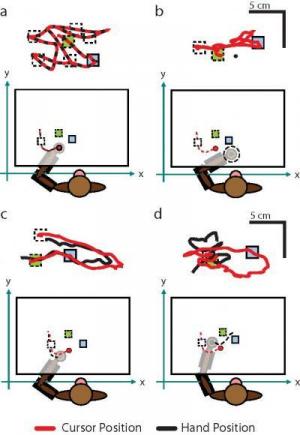They developed a new smart polymer (plastic). Hit with low-power NIR, the material breaks apart into small pieces that appear to be nontoxic to surrounding tissue. They could put the polymer in an implantable hydrogel, which is a water-containing flexible material used for tissue engineering and drug delivery. A hydrogel with the new polymer could release medications or imaging agents when hit with NIR. “To the best of our knowledge, this is the first example of a polymeric material capable of disassembly into small molecules in response to harmless levels of irradiation,” say the researchers.
A practical "smart" material that may supply the missing link in efforts to medically use a form of light that can penetrate four inches into the human body (credit: University of California, San Diego)
|
Ref.: Nadezda Fomina, et al., Low Power, Biologically Benign NIR Light Triggers Polymer Disassembly, Macromolecules, 2011; 44 (21): 8590 [DOI: 10.1021/ma201850q]
[ more ]

